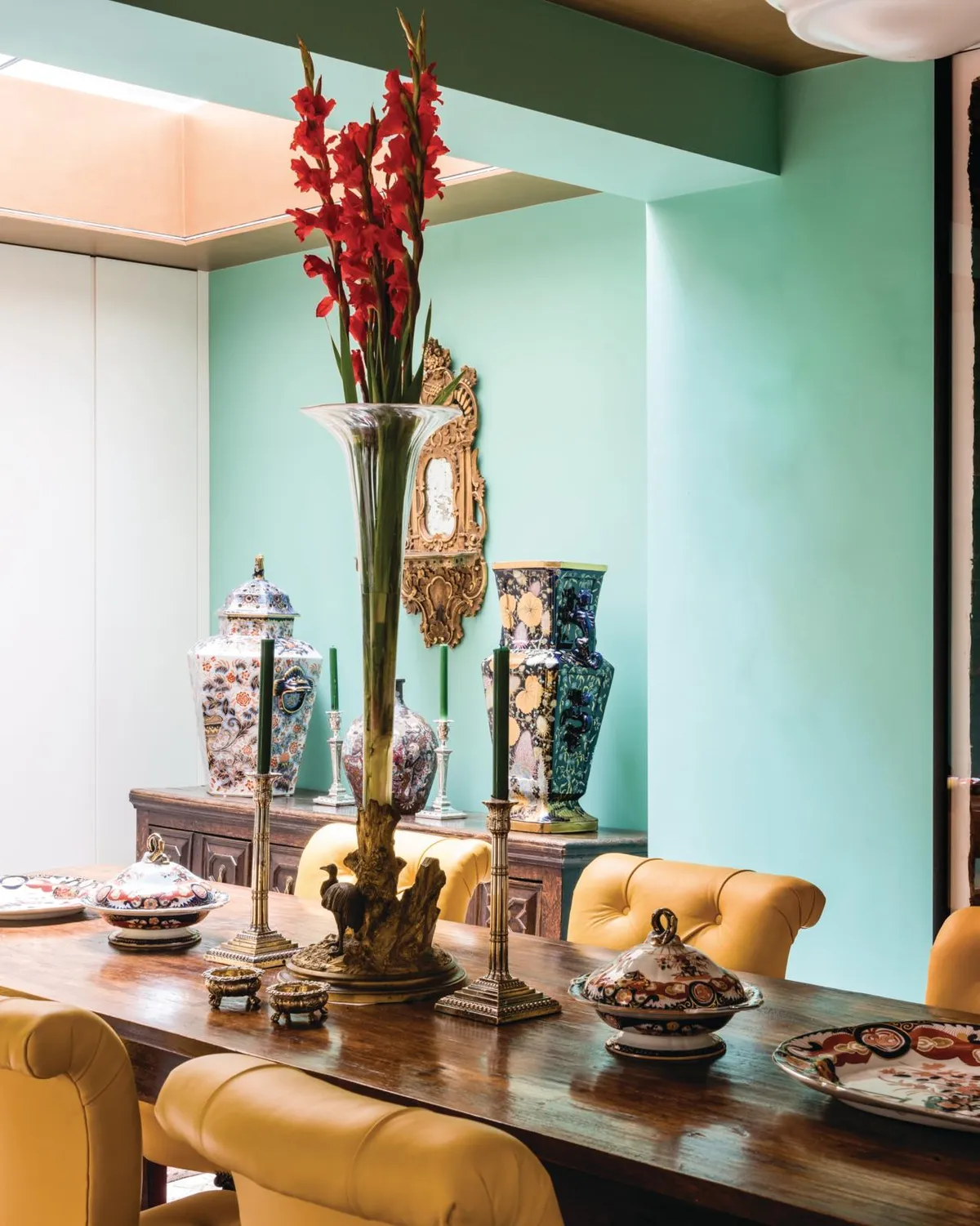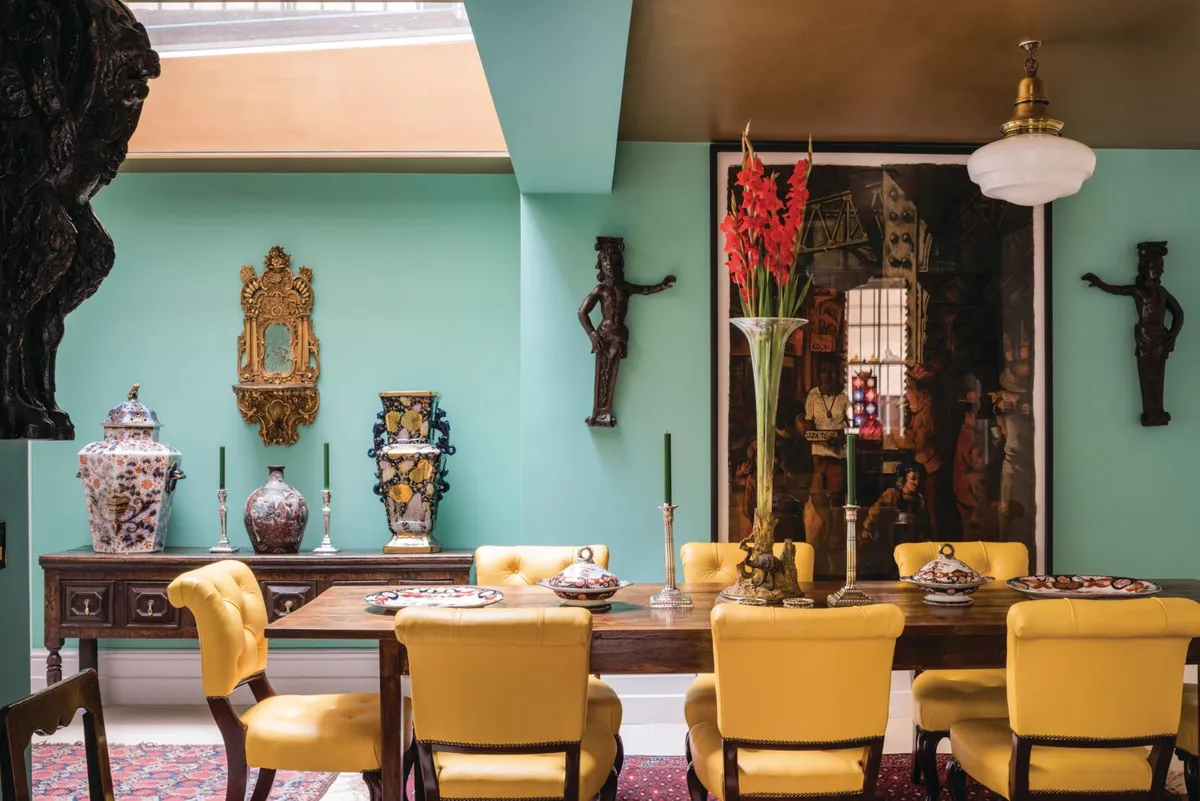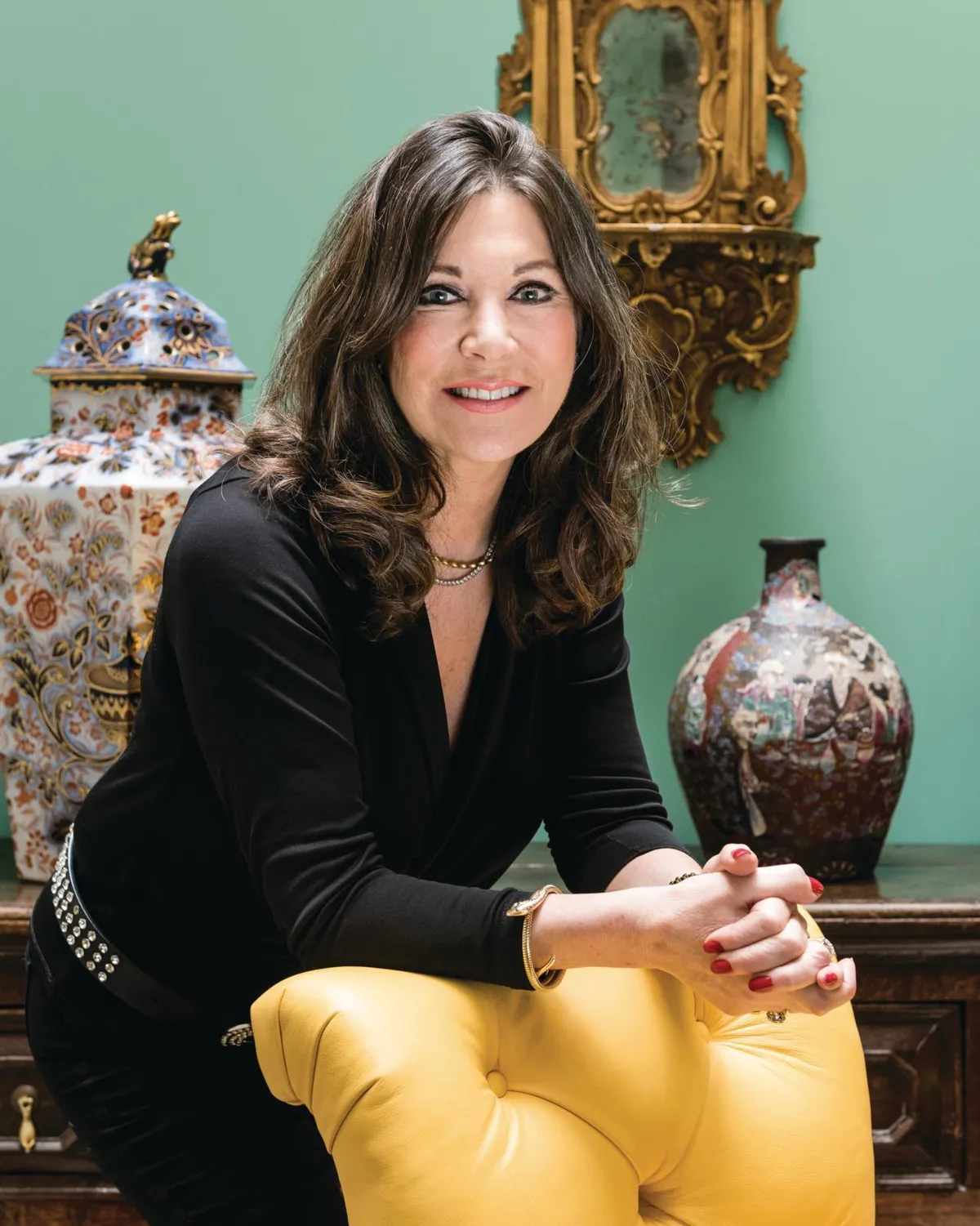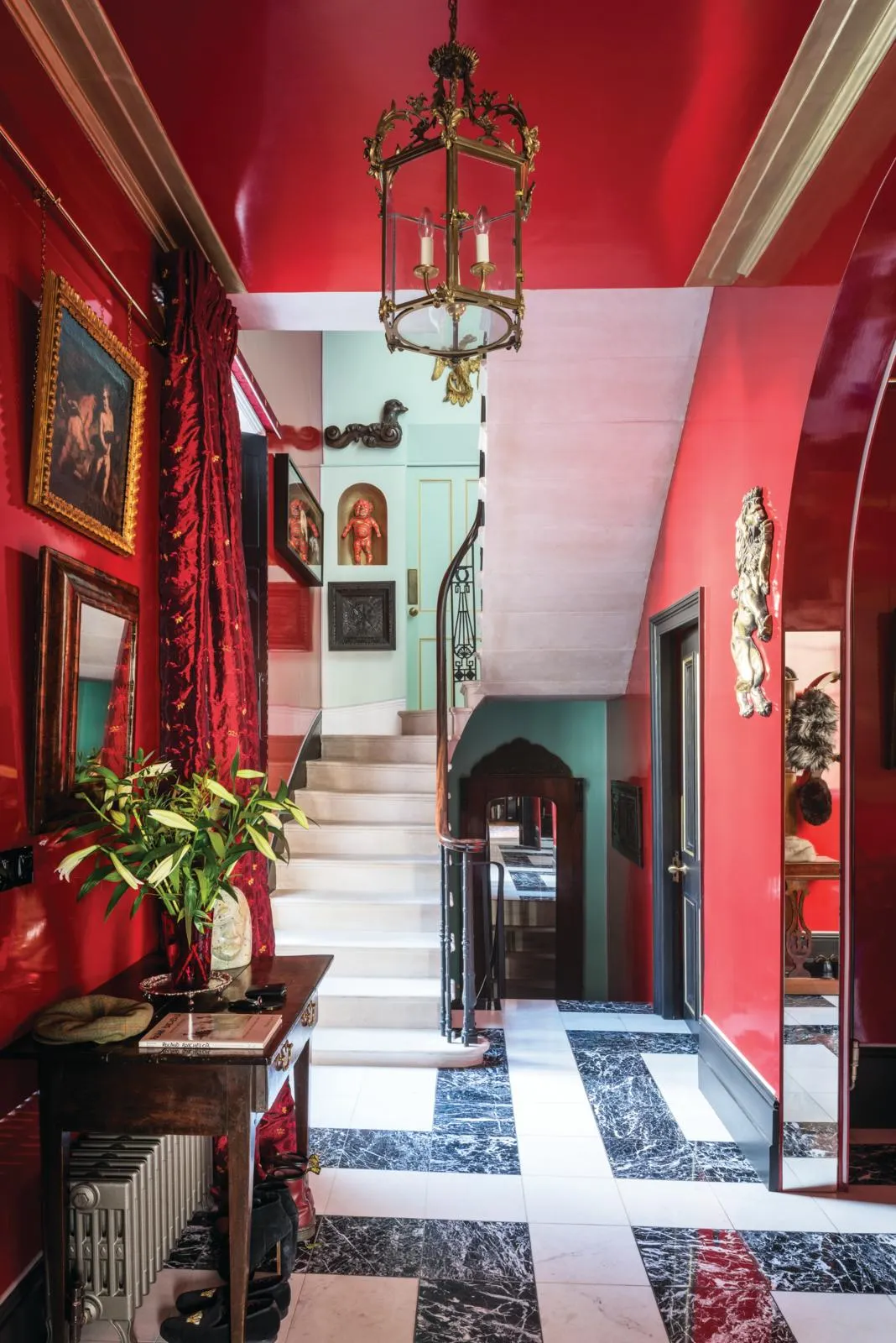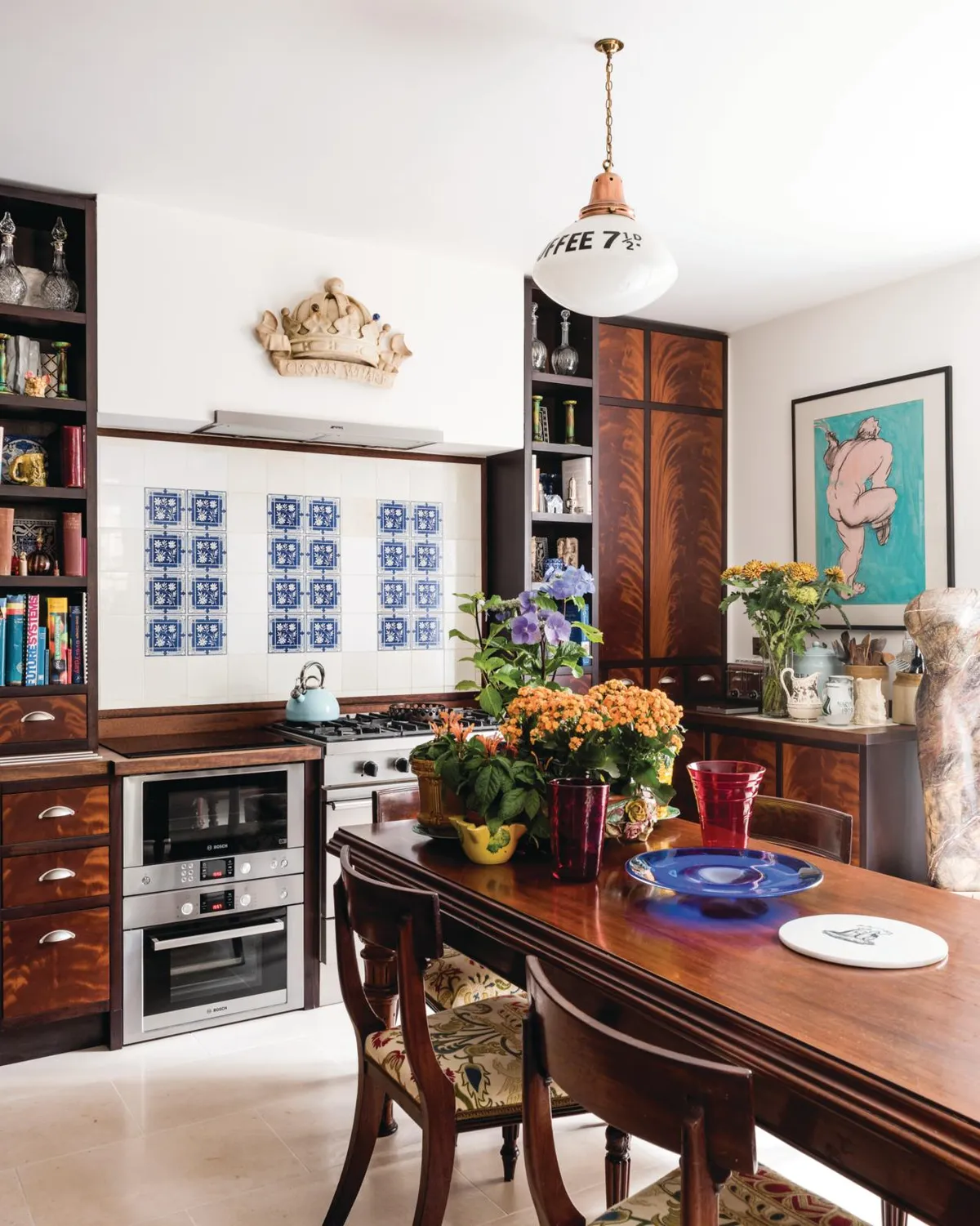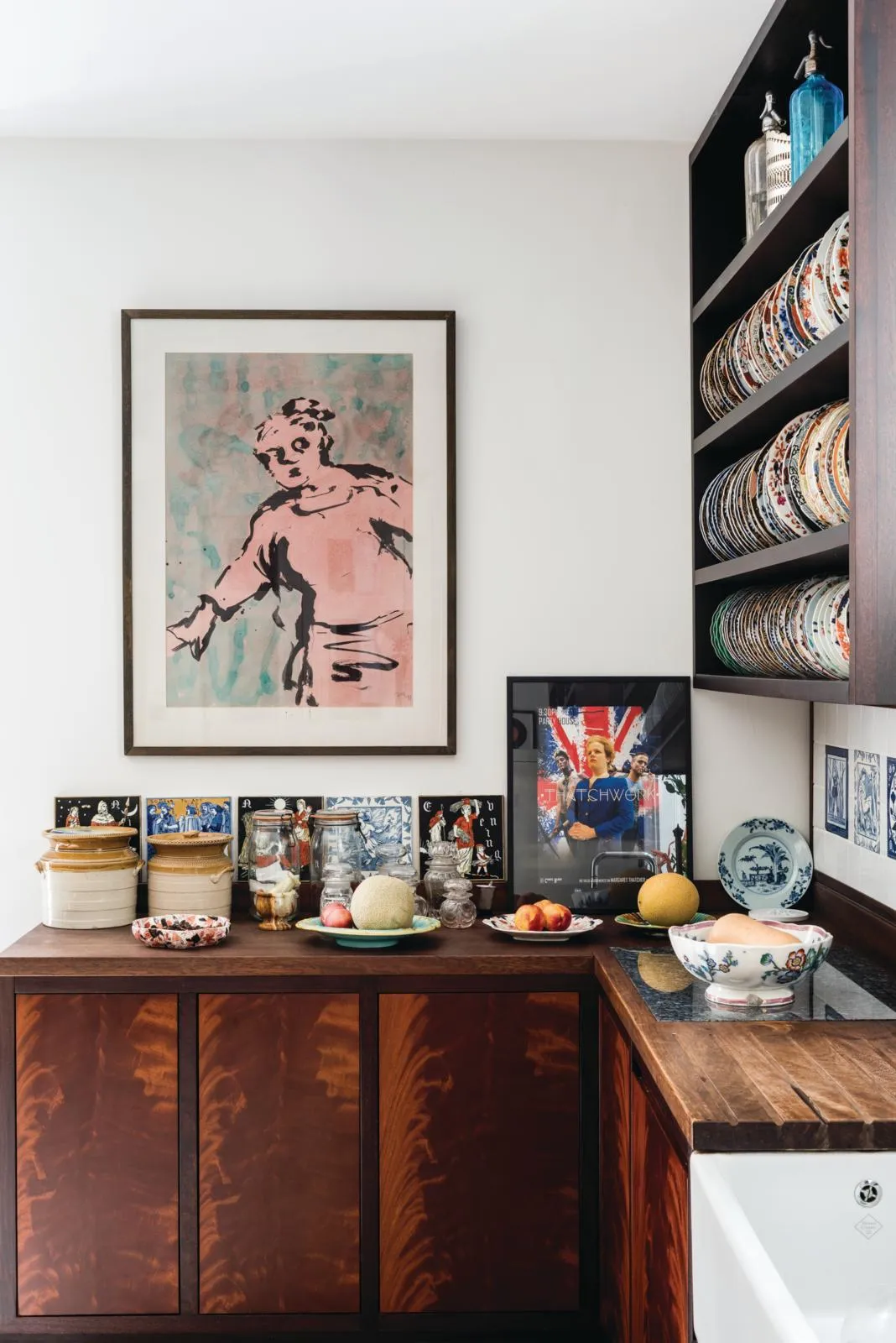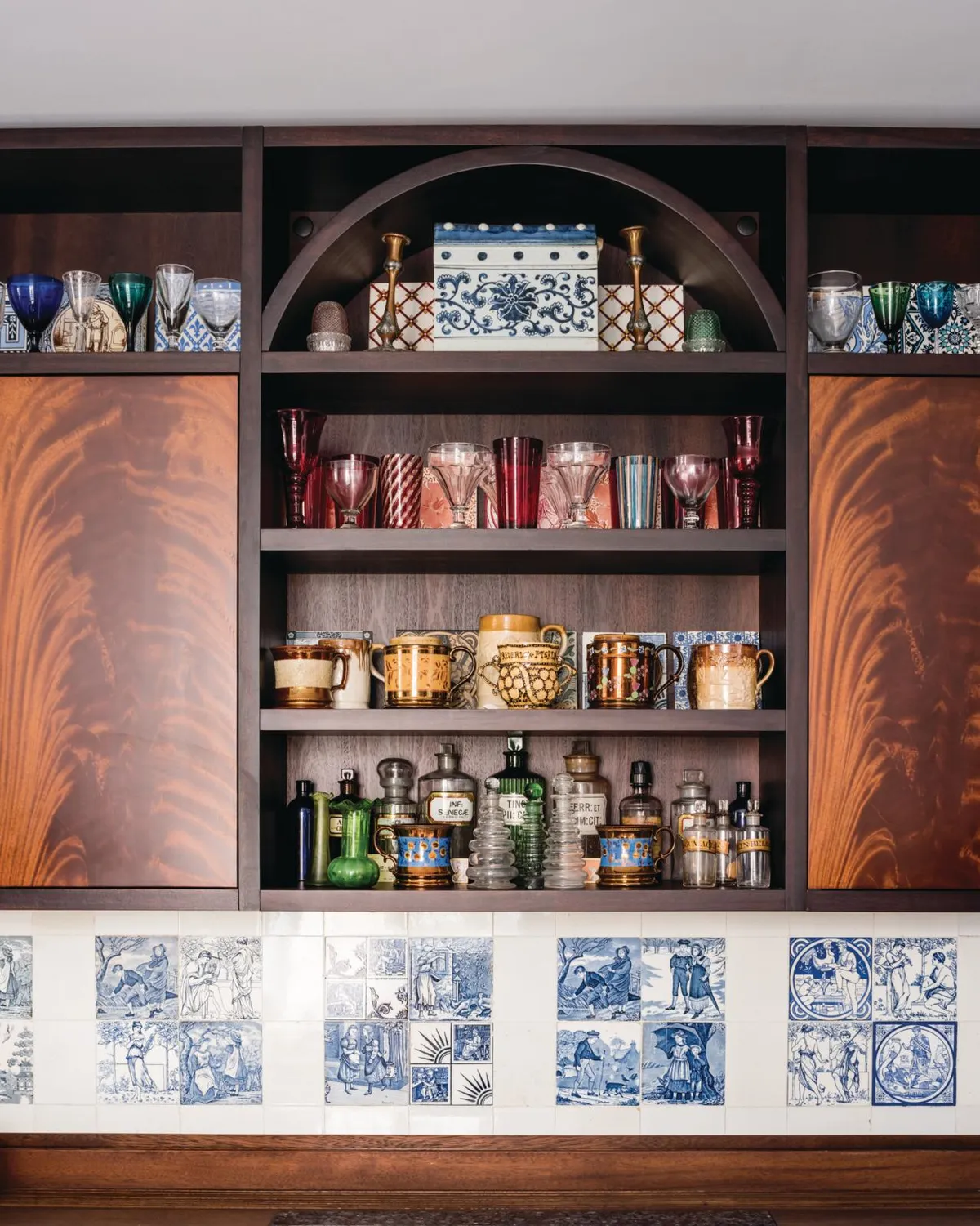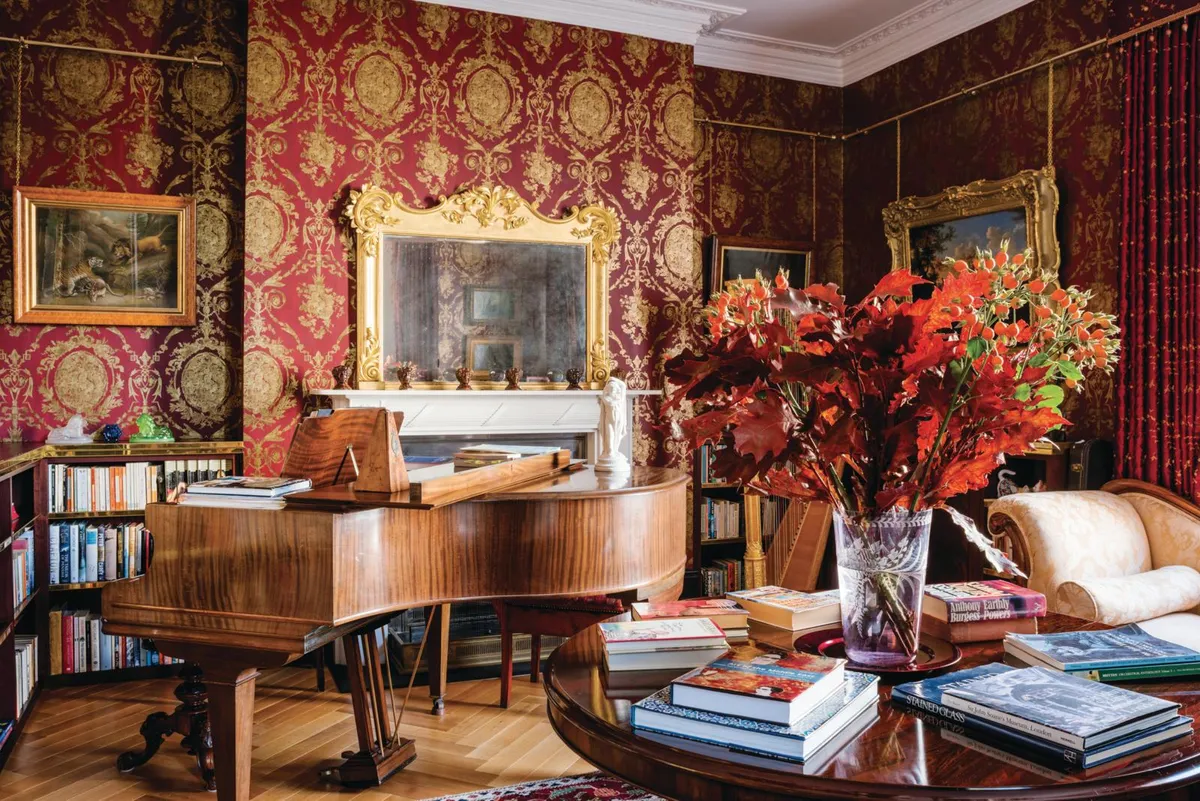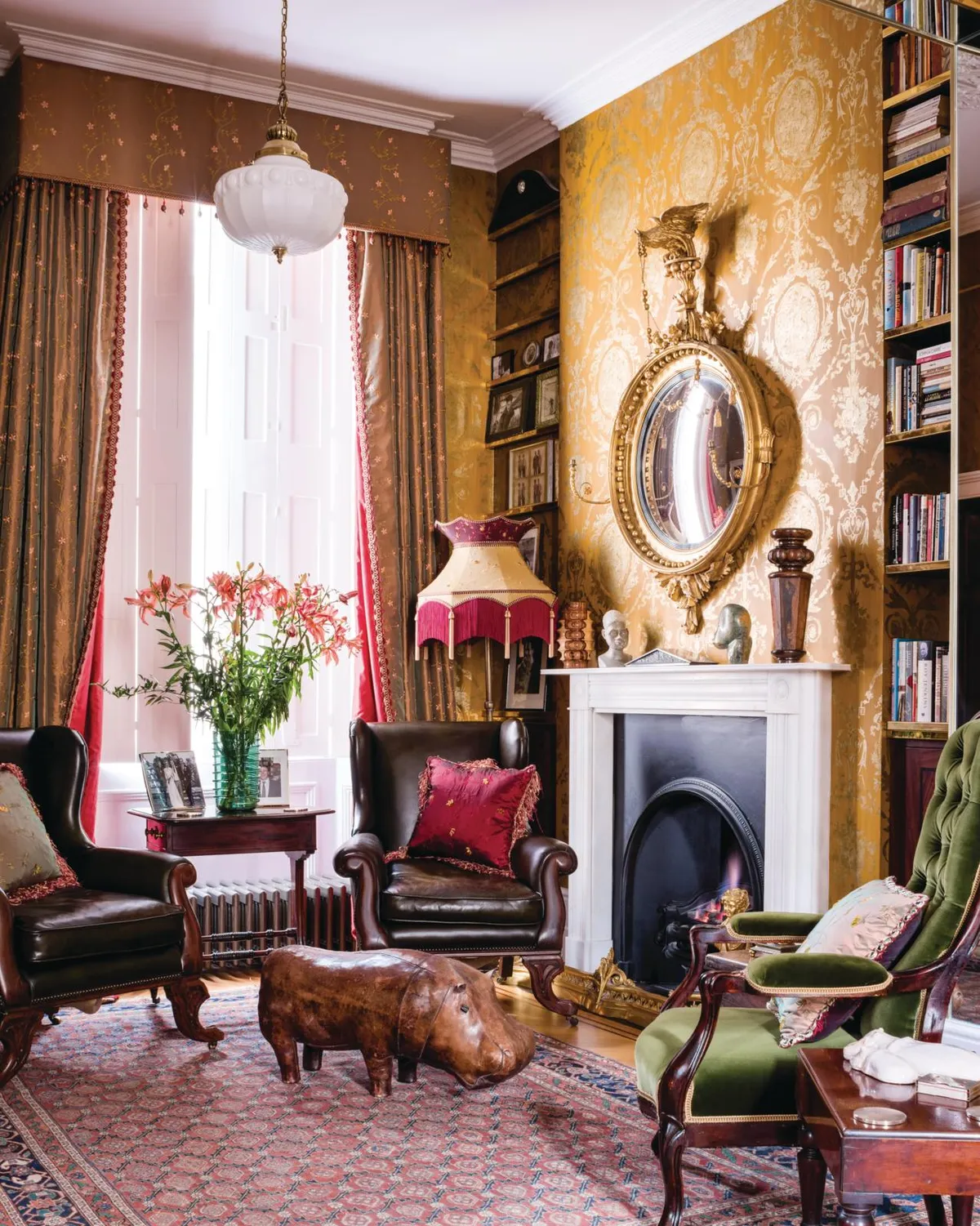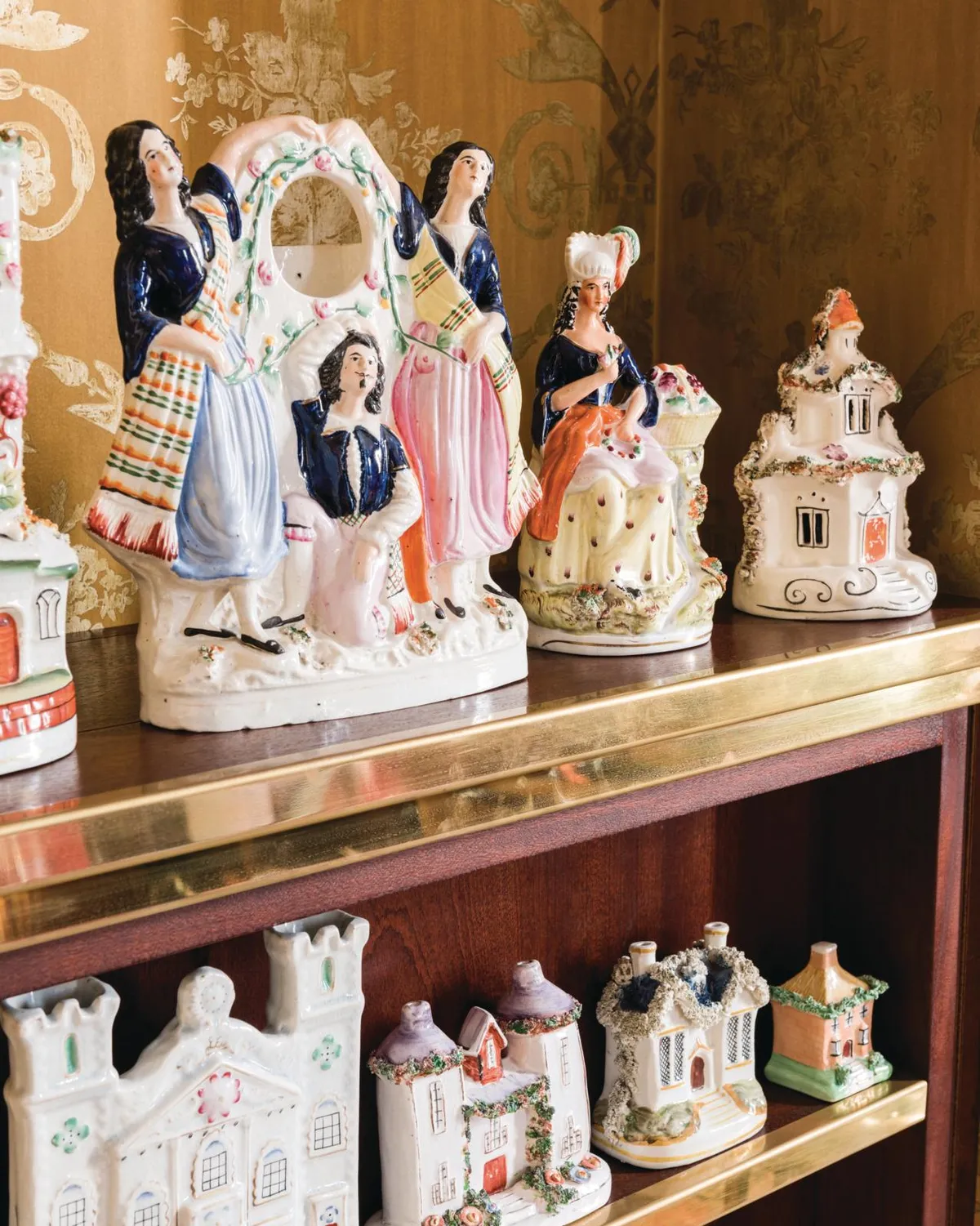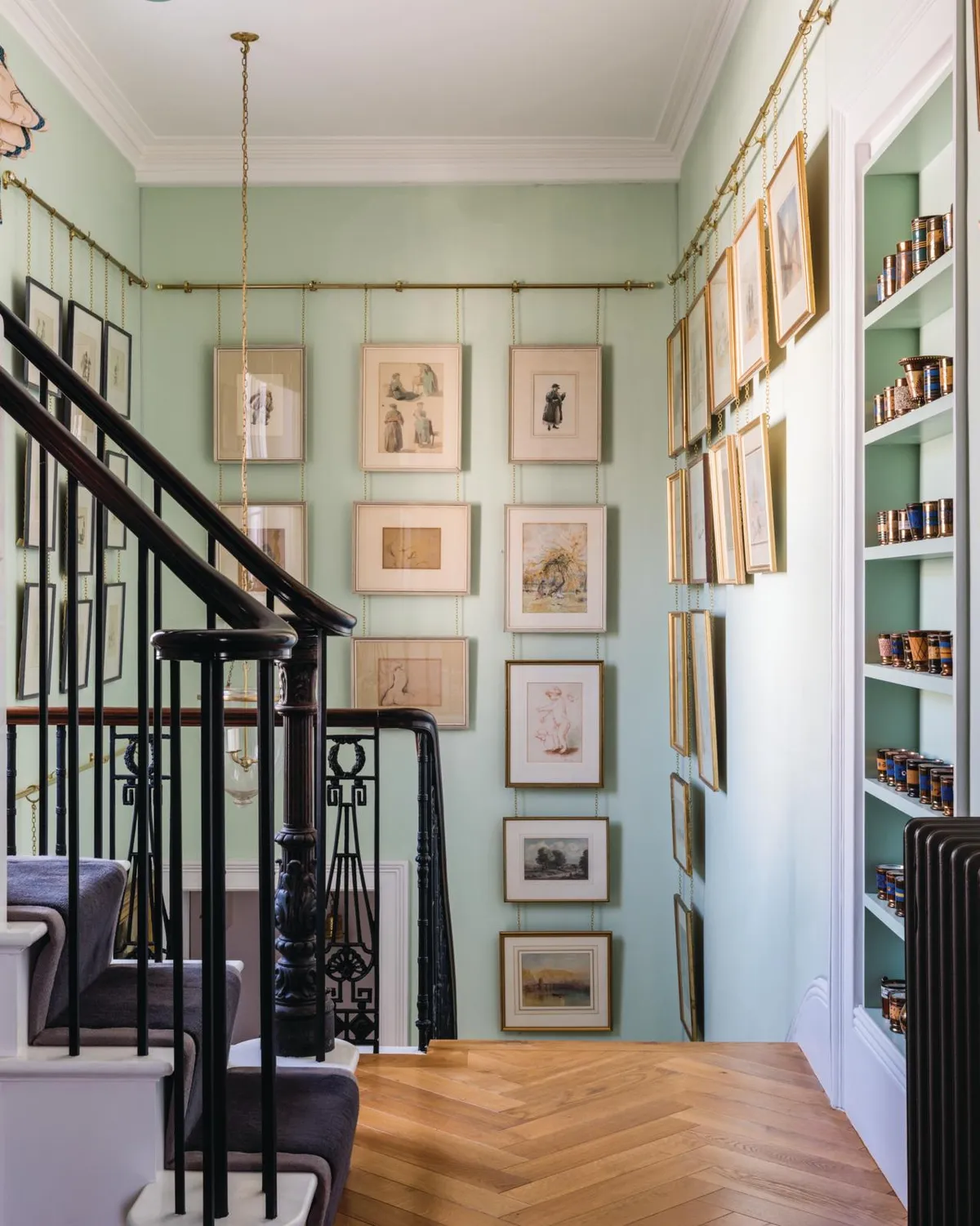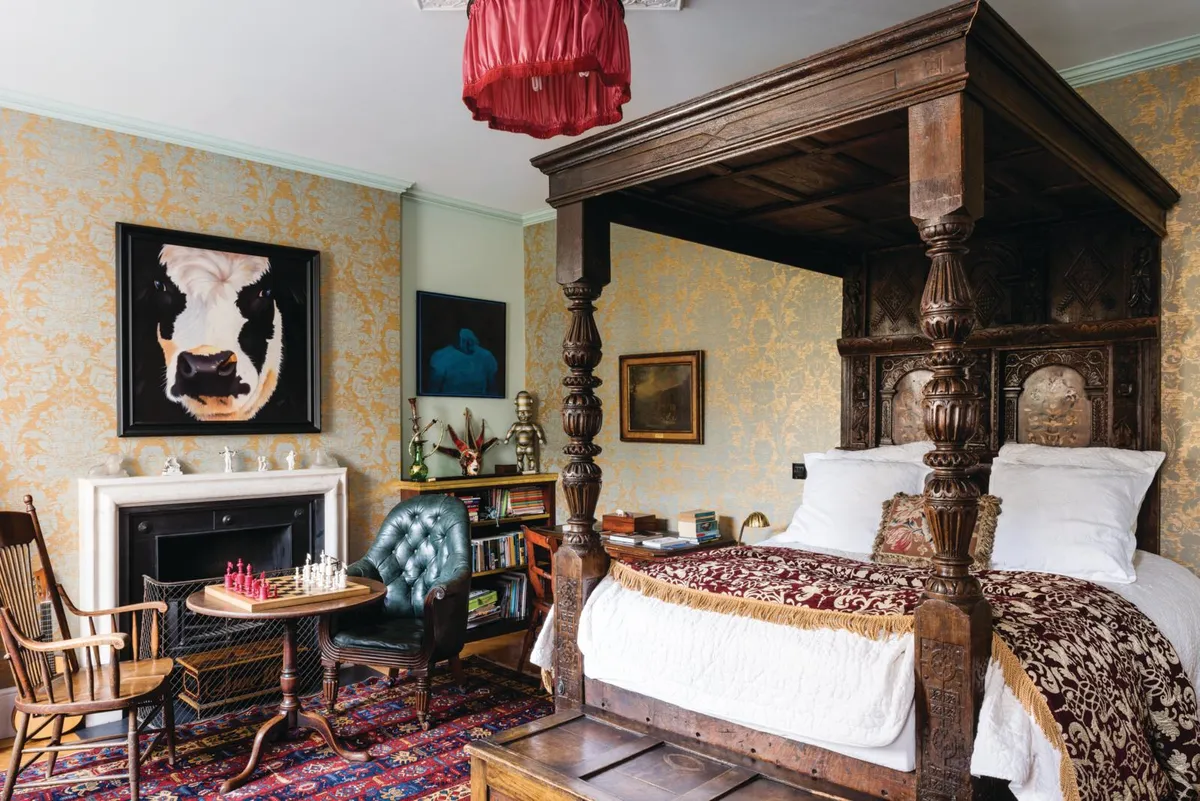Naomi Heaton’s house is decidedly prime in its location and architecture. It’s a large cream stucco terraced house in Regent’s Park, part of John Nash’s (1752–1835) master plan for the area, conceived in 1811 and developed over the next decade.
And so it should be, for Naomi is an expert in prime London residential property investment. This might make you imagine her home to be grand-but-bland – all uncluttered interiors in grey and taupe with shiny floors and a German steely-white abattoir kitchen.
But step into the entrance hall – lined with Chinese red lacquer and 16th and 17th-century portraits and featuring a black-and-white marble floor copied from a Vermeer interior – and all ‘show flat’ associations are dispelled.
Naomi and her husband Jonathan, a medical academic, are risk-taking decorators and enthusiastic collectors of everything from Victorian vernacular (Staffordshire figures, Sunderland lustre), to rather startling Japanese contemporary sculpture via masters such as William De Morgan and John Piper.
You might also like a Grade I-Listed Isokon apartment
They buy with a combination of boldness – snapping up pieces that frighten less confident buyers – and careful research. They like knowing the history of styles and makers, and also enjoy buying from artists they know.
The couple find things they are drawn to – such as Jonathan’s beloved Victorian glass lions – and start collecting them in numbers. Decorative tiles pop up all over the house, as do Mason’s celebrated ironstone plates – Naomi and Jonathan could feed the 5,000 from them.
They’ve thought of imaginative things to do with favourite objects, too – on the first-floor landing a carefully planned collection of William De Morgan tiles has been ordered into a six-foot high ‘picture’, framed with salvaged pilasters and topped with the cresting from a Victorian chaise longue. ‘The tiles used to be propped up on shelves with Blu Tack, but then we had the idea of turning them into a composition,’ says Naomi.
Against a window hangs another collection: eight jewel-bright early 19th-century blue and red glass quarter lights from doors and windows, framed together as a kind of secular stained glass.
In the kitchen, favourite blue-and-white Victorian tiles have been organised in groups of four by subject and set into plain white tiles. ‘Some represent the seasons, but there are other more satirical ones about professions – such as law and medicine,’ says Naomi.
While they visit Christie’s and Bonhams frequently and follow objects around the world online, many of the pieces have been here for a long time, such as the objects bought from since-gone Camden Passage antiques dealers and Stoke Newington architectural salvage yards.
You might also like Bridgerton interiors: get the Regency look at home
There are triumphant coups – like the William De Morgan tiles: ‘I bought these from a Stoke Newington salvage yard 30 years ago – they were a wonderful find,’ says Jonathan.
Both had mothers with an eye and knowledge. Naomi’s mother, Patricia Jarrett, dealt in drawings and watercolours and wrote a book on Roland Batchelor, many of whose pictures are clustered in the stairwell. Jonathan’s mother was a furniture dealer. Neither can remember a time when they weren’t reading, talking and looking at interesting things.
This is clearly a house of many parts. While the entrance hall is as chic and shiny as a Manhattan apartment, the close-hung drawings and watercolours set against a greeny-blue background on the staircase are pure English country house.
The drawing room, with its dramatic damask papers, gold and cinnamon colours and Regency furniture, is something else again. There’s a contrast around every corner and an intriguing story.
